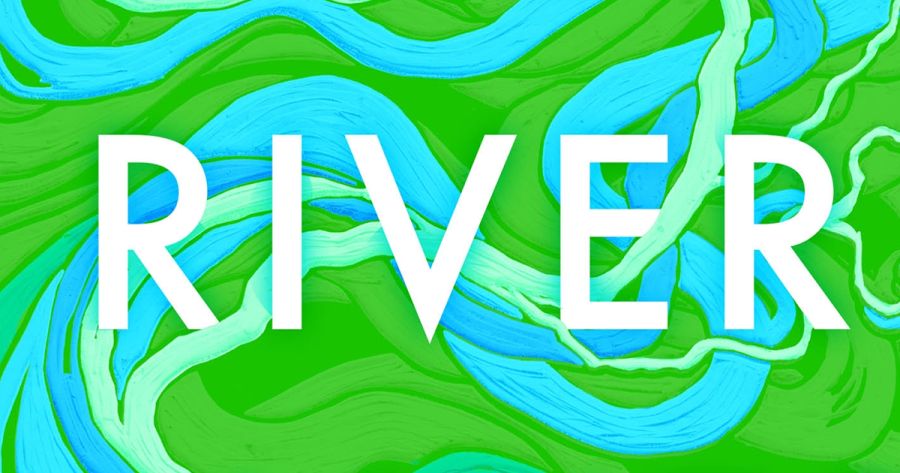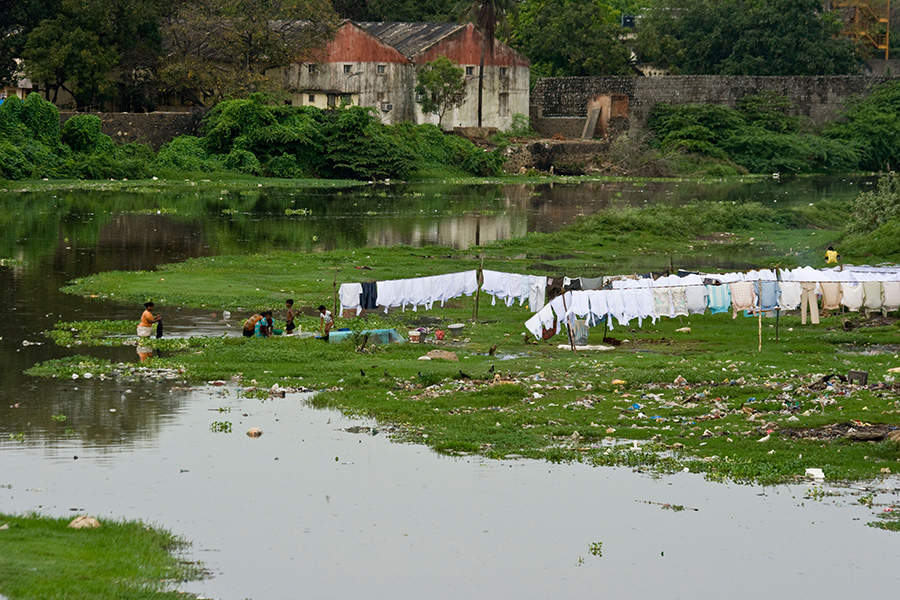
- Free Article: No
- Contents Category: Science
- Review Article: Yes
- Article Title: Run to the sea
- Article Subtitle: What the rivers say
- Online Only: No
- Custom Highlight Text:
For the past year, I’ve thought deeply and often about rivers, one in particular. The Maribyrnong River is 160 km long and runs from Mount Macedon to Port Phillip Bay. The name, adapted from the languages of the Wurundjeri, Woi Wurrung and Bunurong, who called it Mirring-gnay-bir-nong, purportedly means ‘I can hear a ringtail possum’. Initially known by British settlers as the Saltwater River because it is tidal, the Maribyrnong has a gritty history. In Footscray it served as a drain for the noxious industries that lined its banks for decades. The Maribyrnong appears every now and then in the news when it floods, as a place from which stolen cars are dredged, or when bodies wash up.
- Featured Image (400px * 250px):

- Alt Tag (Featured Image): Ceridwen Spark reviews ‘Is a River Alive?’ by Robert Macfarlane
- Book 1 Title: Is a River Alive?
- Book 1 Biblio: Hamish Hamilton $55 hb, 384 pp
- Book 1 Cover Small (400 x 600):

- Book 1 Cover (800 x 1200):

- Book 1 Readings Link: https://www.readings.com.au/product/9780241624814/is-a-river-alive--robert-macfarlane--2025--9780241624814#rac:jokjjzr6ly9m
The Polish poet Czesław Miłosz wrote, ‘When it hurts, we return to the banks of certain rivers.’ In this magnificent book, Is a River Alive?, Robert Macfarlane writes that in Māori ‘one might greet someone new by asking, “Ko wai koe?”, which literally translates as “Who are your waters?”’
Macfarlane’s work is part travelogue, part philosophical exploration, part polemic. He has the credentials to ask – and seek to answer – his big question, ‘Is a river alive?’ A professor of literature and environmental humanities at Cambridge University, the author of renowned books, as well the creator of films and operas, Macfarlane has for a long time explored the relationships between nature, people, and place. His engagement with what has come to be known as the Rights of Nature movement is deeply thoughtful, and his efforts to answer his provocative question structure the narrative.
Across 300 pages, we journey with this humble, philosophical man to three very different parts of the world to seek answers. They are Los Cedros in northern Ecuador, the ‘wounded rivers and lagoons of southern India’, and the Mutehekau Shipu, also known as the Magpie River, in north-eastern Quebec. Each of these explorations has a distinct mood and feel, and the rivers emerge as unique entities. Where the rivers of northern Ecuador, coursing through Los Cedros, a cloud forest which is home to the headwaters of the Rio Los Cedros, are ‘fast, shallow, clear and rock-bedded’, the majesty and power of the Mutehekau Shipu is depicted by Macfarlane as a mighty force. In contrast, he portrays the rivers of Chennai as having been ‘murdered’ and as ‘stricken’, reeking of sewerage and garbage.
Kayaking the Mutehekau Shipu with three river guides, ‘the Bear, the Salmon and the Boss’, as well as his ‘old friend’ Wayne, it is in this third and last river journey that Macfarlane is most vulnerable, perhaps because it is here that he is most immersed in the river. In awestruck prose, he captures his own exultant response: ‘Faced with a river, as with a god, apprehension splinters into apophasis; deixis is dismantled. The alien will not be articulated. Alive, yes, but not in any way we might speak it.’
Macfarlane responds to people in the same way he does to places. Some are remarkable individuals. Giuliana, a fungi expert who joins the Los Cedros expedition, is a case in point. Time and again, she hears or senses fungi calling her from the forest, her attunement leading to the discovery of new species on more than one occasion. Yuvan, who accompanies Macfarlane in Chennai as the pair visit waterways surrounded by air so polluted that they cannot see, is gentle and wise. Having survived childhood violence, he has become a passionate defender of the polluted waterways of Chennai, and of the people destroyed by the ecological Armageddon occurring around them.
The oyster reefs, fish and shrimp they used to hand-fish have declined drastically. Their skin has been blistered from wading in toxic water and burned from wading in water heated at times to scorch-point by thermal power stations. Their villages have become hemmed in by factories, and their children now play in pools of toxic fly-ash.
 Woman handwashing clothes in the river at Dhobi Ghat, Chennai, 2008 (dbtravel/Alamy)
Woman handwashing clothes in the river at Dhobi Ghat, Chennai, 2008 (dbtravel/Alamy)
This middle section of the book, based on the rivers and waterways of Chennai in southern India – the only urban context Macfarlane visits – is perhaps the most confronting. But it is also likely to be the most relatable for readers, most of whom inhabit cities made possible because rivers were harnessed and tamed to human ends. The dawning realisation that their destruction will accompany our own has, in some cases, come too late.
Of the people that populate this book, it is the men who kayak with Macfarlane on the remarkable journey in northern Quebec that make a lasting impression. Fisherman Ilya, the enormous ‘bear of a man’ who struggles with the pull of addiction, ‘meditates and medicates with rivers’, and Wayne, who drove around America during Covid-19 so that he would not go crazy, embody a vulnerable, identifiable humanity, thanks to Macfarlane’s empathetic portrayal.
There is a long tradition of writing about rivers in the English language, stretching from George Eliot and James Joyce to, closer to home, Richard Flanagan’s Death of a River Guide (1994) and Harry Saddler’s book A Clear Flowing Yarra (2023). This rich tradition is itself steeped in a relationship with literature. For example, Olivia Laing’s book To the River (2011) is about the Ouse, the river in which Virginia Woolf drowned herself in 1941. Though such works convey much about how rivers have been represented in art and literature, at times there can be a certain remove from the rivers themselves. Macfarlane achieves a noteworthy balance; though his book is richly saturated with quotations and ideas about rivers, he never strays from their materiality.
Always readers are there in the place. For instance, at the Gorge in Quebec, a river which Wayne describes as being able ‘to cut a fucking mountain in half’, Macfarlane writes:
The rock beneath us is juddering from the water’s force and the vibrations move through our bodies as if they were tuning forks, so that our bones turn turbulent and our minds also, and now the rock we stand on gleams and is liquid – it also roils and has eddies, though they are too slow for our human eyes to see – and the water is all pearls and bulbs, and the rock is those things too so must surely fall through it or sink into it, and there are sounds with no source.
Given the profundity with which Macfarlane writes about his relationships with the people and places he encounters, it is surprising that his efforts to answer the titular question are not entirely convincing. It is Wayne who comes closest to articulating the conundrum at the heart of the Rights of Nature movement – namely, that the question ‘what do the rivers say?’ is unanswerable except in human terms. ‘They want to run to the sea’, the answer Macfarlane gives, is nevertheless one that I can live with.


Comments powered by CComment